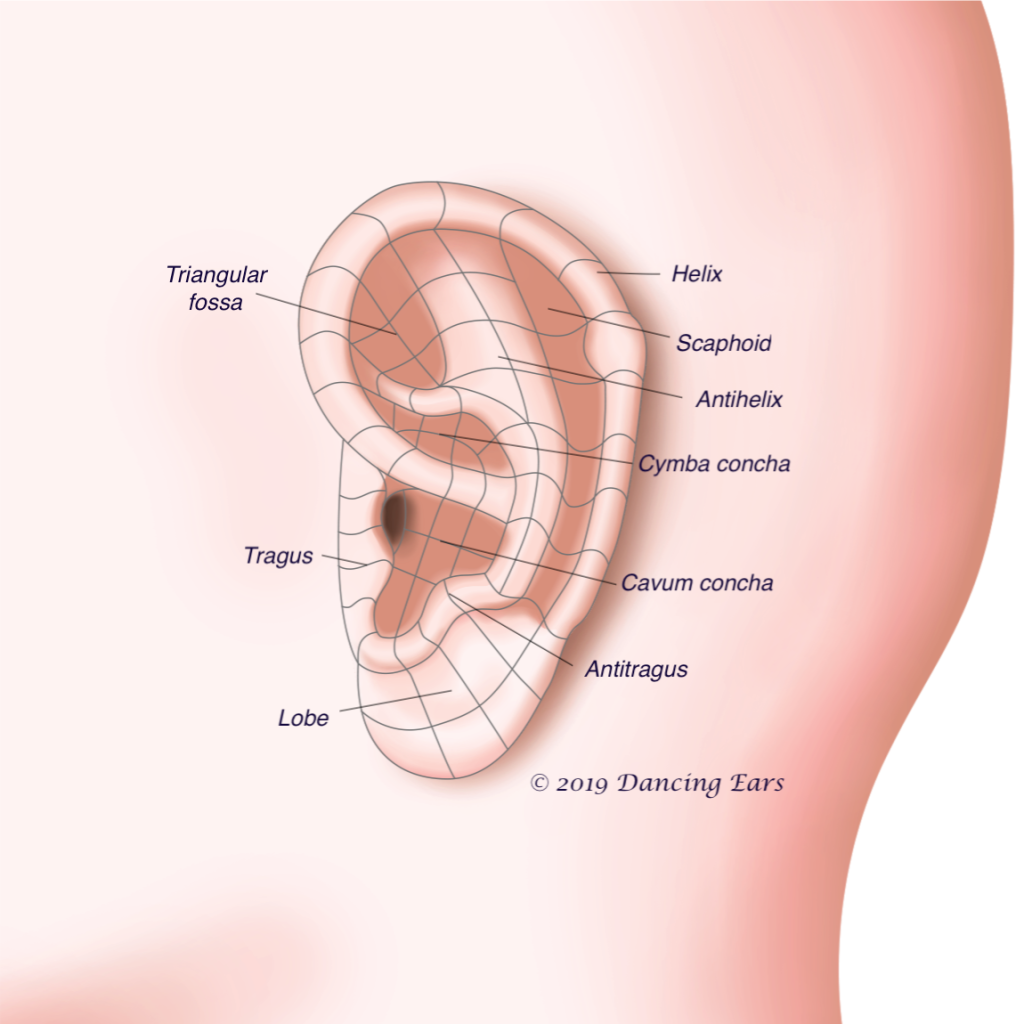I’m A Bit Obsessed With The Ear
For the past several years I’ve been delving deeply into using auricular (ear) techniques for healing. This includes ear massage with reflexology points on the ear, as well as seeding points, applying a few needles, as well as a pen that emits resonant frequencies.
Briefly, A History Lesson
There is a rich history of using the ear to address pain and functional disturbances that dates back to ancient Greece, Egypt, China and parts of Europe. Because of the pioneering work of Dr. Nogier, a French physician who devoted his life to auriculotherapy and tested pathways on the ear, western medicine has moved into using this system as well. The advantage to my patients is that I have studied both systems, and can integrate the Chinese and European approaches and provide a relaxing treatment that opens the points with massage and reflexology, as well as implementing some of the western medicine approaches.
Advantages In Treatment
Auriculotherapy is sometimes preferred over regular acupuncture/acupressure because it is less invasive, simpler, and does not take as much time. It is also more affordable. Yet, in some cases, its effects can exceed other modes of treatment especially when neuronal networks fall into a groove whereby a regular stimulus. doesn’t seem to work. Examples of these include migraine, insomnia, attention deficit, memory problems, anxiety and long-held disturbances of digestive, respiratory and cardiac functions.
Auriculotherapy Maps Neurological and Embryological Pathways
The ear is a microsystem, from which neural inputs and embryological data is stored. Manipulating these areas causes pulse changes in the vascular and neurological pathways of the body. And, clinical research shows that it is possible to detect and treat regions of the nervous system including processing centers of the brain using auricular methods such as massage, seeds, and frequency. The vagus nerve, for example, is only accessible via the external ear in terms of surface anatomy. This is one of the reasons for burgeoning research into treating intractable migraine using auricular detection of this nerve.
Auriculotherapy Treatments for Better Nervous System Regulation
The brain and nervous system function via a system of interconnectedness involving the cortex, the brain stem, and the body. When signals are disrupted or some center of the brain is not firing well, the consequences are seen and felt. One big plus to auricular treatment is that it is possible to stimulate points corresponding to these centers – such as thalamus, brain stem, amygdala, occipital lobe, and more. This also explains how stimulating brain points improves regulation and functioning. Insomnia, memory deficits, ADD/ADHD, seizures, and certain cases of anxiety and migraine are all related to brain functioning, and may respond better to auricular treatment than regular acupuncture.
Links To Help Educate
Below are a list of links to auricular research.
Velangi, Chandrabhaga S.1; Yavagal, Puja Chandrashekar2,; Nagesh, L.3. Role of Auricular Laser Acupuncture and Psychological Counseling in Reducing Nicotine Dependence Due to Smoking: A Randomized Controlled Trial. Indian Journal of Public Health 65(3):p 243-249, Jul–Sep 2021. | DOI: 10.4103/ijph.IJPH_810_20. doi: https://journals.lww.com/IJPH/Fulltext/2021/65030/Role_of_Auricular_Laser_Acupuncture_and.6.aspx
Round R, Litscher G, Bahr F. Auricular acupuncture with laser. Evid Based Complement Alternat Med. 2013;2013:984763. doi: 10.1155/2013/984763. Epub 2013 Jun 26. PMID: 23935695; PMCID: PMC3710613.
Nina Sviridova, Tiejun Zhao, Kazuyuki Aihara, Kazuyuki Nakamura & Akimasa Nakano (2018).
Photoplethysmogram at green light: Where does chaos arise from? Chaos, Solitons & Fractals, Volume 116, pages 157-165. https://doi.org/10.1016/j.chaos.2018.09.016.
He W, Wang X, Shi H, Shang H, Li L. Jing X & Zhu B. (2012). Auricular acupuncture and vagal regulation. Evidence Based Complementary & Alternative Medicine 2012:786839. doi: 10.1155/2012/786839. Epub 2012 Nov 27. PMID: 23304215; PMCID: PMC3523683.
